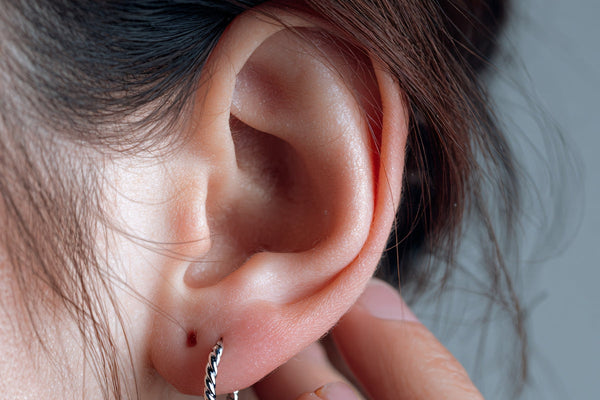
A fungal ear infection, also known as otomycosis, is an infection of the outer ear canal caused by fungal growth. It’s more common than many people realise and can lead to itching, discharge, and a blocked or uncomfortable feeling in the ear. While it can be unpleasant, it’s usually easy to treat once properly diagnosed.
At Leightons, we understand how uncomfortable and irritating ear infections can be. Our audiologists are trained to recognise the signs of ear infections and can check your ear health safely. If a fungal infection is suspected, we can refer you to your GP or an ENT specialist for treatment and help you maintain healthy ears long-term.
What is a fungal ear infection?
A fungal ear infection occurs when fungi grow in the outer ear canal - the passage leading from the outer ear to the eardrum. The most common fungi involved are Aspergillus and Candida. These organisms are usually harmless, but when the ear becomes warm, moist, or irritated, they can multiply and cause infection.
Fungal infections are sometimes mistaken for bacterial ear infections, as symptoms can be similar. However, they require different treatments, which is why a professional ear examination is essential for accurate diagnosis.
What causes a fungal ear infection?
Fungal ear infections can affect anyone, but they’re more common in warm or humid environments, or when the ear’s natural defences are disrupted. Common causes and risk factors include:
- Moisture in the ear from swimming or showering (often called swimmer’s ear)
- Use of ear drops or antibiotics that upset the ear’s natural balance
- Removing too much earwax, which normally protects against infection
- Wearing earplugs, which can trap moisture
- Humidity or heat, creating an ideal environment for fungi to grow
- Skin conditions such as eczema or dermatitis affecting the ear canal
Healthy ears usually maintain a balance that prevents fungal growth, but if that balance is disturbed, infection can develop.
Symptoms of a fungal ear infection
Fungal ear infections can cause a range of symptoms that may develop gradually. Common signs include:
- Itching or irritation in or around the ear canal
- Dry, flaky, or scaly skin at the ear entrance
- Ear discharge, which may be white, yellow, grey, or even black
- A feeling of fullness or blockage in the ear
- Reduced or muffled hearing
- Mild pain or tenderness around the ear
- Occasionally, a musty or unpleasant smell
If you experience these symptoms, it’s important to have your ear examined by a professional. Attempting to clean your ear at home could make the infection worse or push debris deeper into the ear canal.
How is a fungal ear infection treated?
Treatment for fungal ear infections focuses on removing fungal debris and restoring the ear’s natural balance. This usually involves:
- Antifungal ear drops or creams, prescribed by a GP or ENT specialist, to target the infection.
- In some cases, oral antifungal medication if the infection is persistent or severe.
- Professional ear cleaning by a clinician to clear wax, discharge, and fungal material.
It’s important to avoid using cotton buds, ear candles, or home remedies, as these can irritate the ear canal and spread the infection further.
Most people notice improvement within a few days of treatment, although full recovery may take up to two weeks depending on severity.
Can I prevent a fungal ear infection?
While fungal infections can sometimes occur unexpectedly, there are several ways to reduce your risk:
- Keep your ears dry - tilt your head after swimming or showering to drain water and gently pat the outer ear dry.
- Avoid inserting objects like cotton buds or hairpins into your ears.
- Let your ears breathe - remove earplugs for short periods to allow air circulation.
- Avoid over-cleaning your ears, as a small amount of wax is healthy and protective.
- Seek professional advice if you experience itching, discharge, or persistent discomfort.
How Leightons can help
At Leightons, we can perform safe and gentle ear health checks to help identify early signs of fungal or bacterial infection. If a fungal ear infection is suspected, we’ll refer you to your GP or ENT specialist for treatment.
After recovery, we can help you maintain healthy ears through regular free hearing assessments or professional wax removal, reducing the risk of infection returning.
We’re here to help you protect your ear health and hear clearly and comfortably every day.
Book your free hearing assessment today and take the first step towards comfortable, healthy ears.








